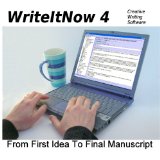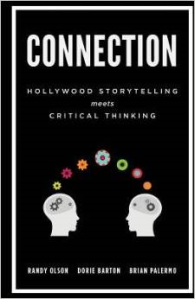The decision to invest in a fiction writing program was an easy one for me. I needed a way to organize information. Tired of wasting energy, time and effort jumping between spreadsheets and documents, searching for things — as small as spelling a character’s name, location, or relationship to becoming frustrated when I wanted to make changes to multiple chapters that I had stored on separate documents.
The choice of which one to use was the difficulty. I read reviews and investigated multiple writing programs, and narrowed my choice to Scrivener, Write It Now, WriteWay, or the free version of yWriter. Scrivener seems to be the choice of many writers, but the learning curve was more than I wanted at this time. I was looking for a more intuitive based program. WriteWay and yWriter didn’t seem to fit me as much as the one I ultimately chose, Write It Now.  Write It Now provided the most flexibility. I like to “co-opt” databases– that doesn’t mean tampering with any of the program itself — I simply like to use fields for what I want, not necessarily what the original intent of the program design intended. I played with my new program for a few weeks, and fine tuned a system that works well for me.
Write It Now provided the most flexibility. I like to “co-opt” databases– that doesn’t mean tampering with any of the program itself — I simply like to use fields for what I want, not necessarily what the original intent of the program design intended. I played with my new program for a few weeks, and fine tuned a system that works well for me.
I appreciate the organization and functions of the program, and using it allows me concentrate on my writing. I also works well in checking overall structure, and I can make changes to my outline as I revise.
Chapters and Scenes, Characters, Locations, Notes and Ideas, are made available in a collapsible menu on the left side of the screen, and provide instant navigation to any point in the story. Having the ability to color code scenes and chapters, and colors correspond within the story board function, is indispensable. I use it to track POV (Point of View). Moving, adding or deleting a scene or chapter is smooth, and there are nifty tools built into it – the ones I use most often are:
storyboard,
thesaurus and spell check,
global word find and replace (when I decide to rename a character or change a location),
word count to track my progress (or identify overly long/short scenes that might need attention),
reading level for each scene (useful because this novel is geared to young adults),
word usage (number of times words are used),
graphs to track everything from conflict and action to meeting writing goals
The character builders, with thought provoking built in questions and prompts is interesting and helps flesh out characters, and the program has relationships and friends tracking and visual charts. I had already built my characters before I installed the program, and only played with it a little so far. There is a lot more this program can do. I think all of the programs I looked at supplied most of these functions.
Bottom line: choose a program that fits you and your style. They are meant to help you organize and ease some of the more mundane, and sometimes overwhelming issues that come with organizing and writing a long piece of fiction.
I’ve only used this program for a couple of months now, but I think first draft and early revisions will be the programs strongest point. I’m guessing I’ll transition to WORD for final manuscript fine-tuning, but won’t know until I get there!
Do you use a software program for writing? What have you found to be the most helpful product or function?
Lesson #11: Using a fiction writing software program helps me concentrate more on my writing, keep track of characters and their relationships, locations, and provides me with an easy way to insure my novel’s structure is on target. Along with other helpful writing tools, it speeds along a first draft, with places to store and retrieve thoughts and ideas, and make changes to the text easily as I go.
To see all the lessons to date, click here: Go to Lessons I’m Learning….
